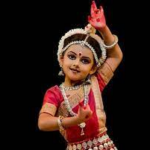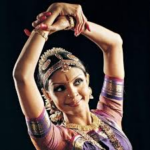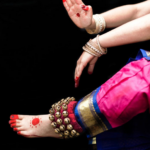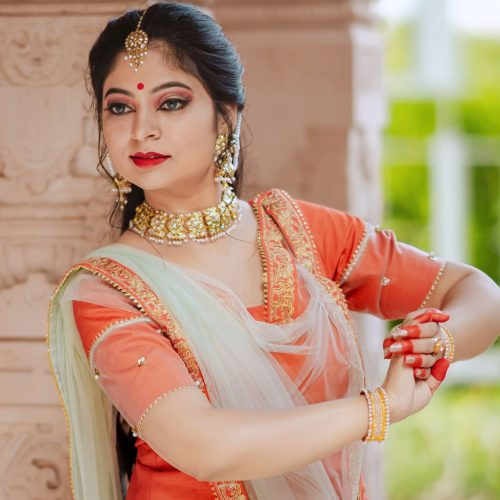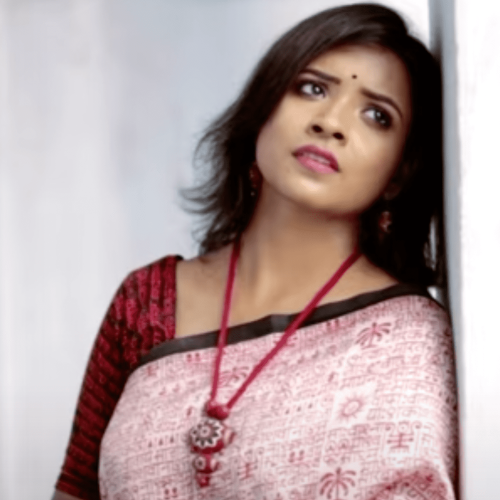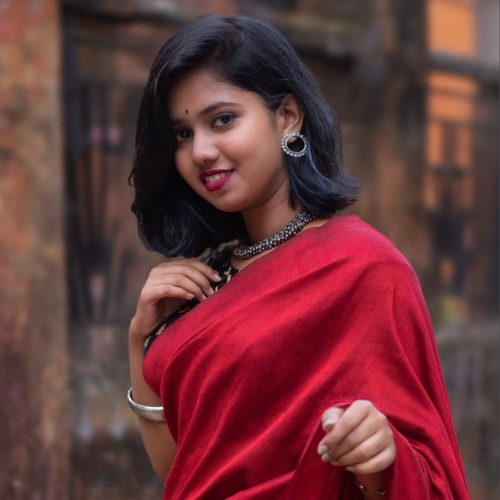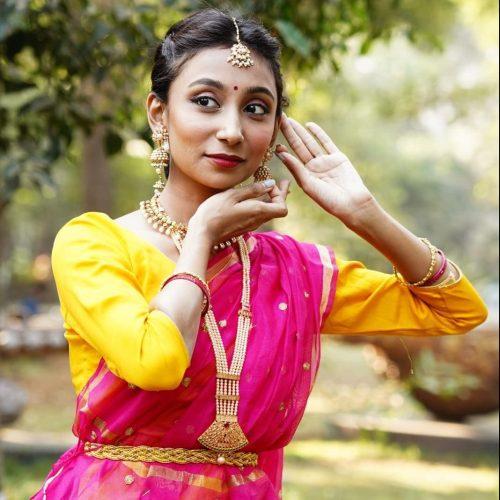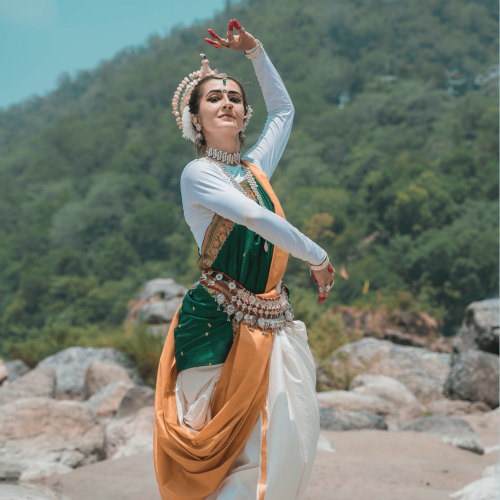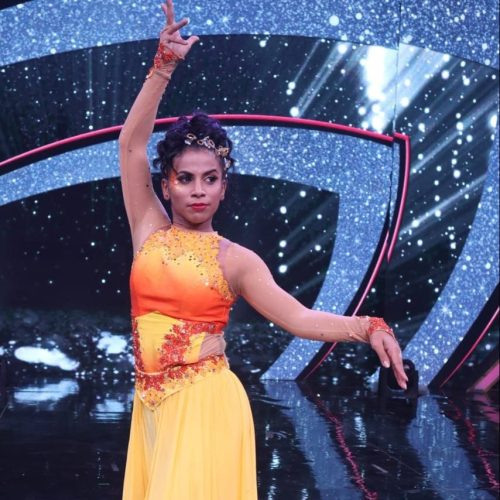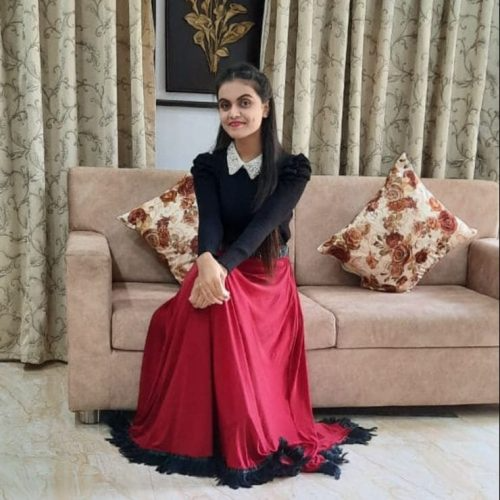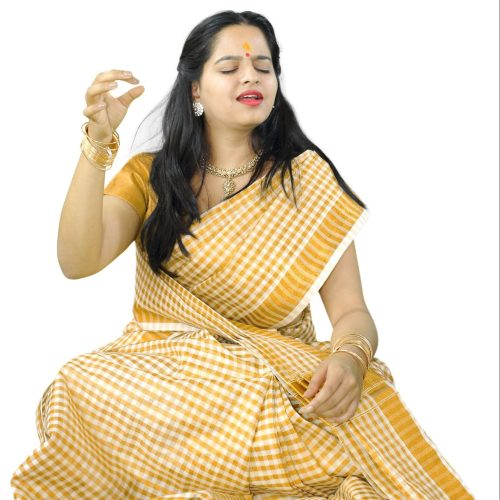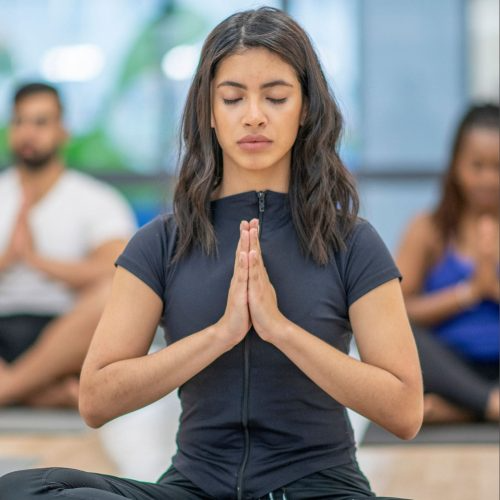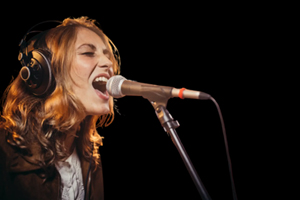The Bharatanatyam Dress: A Fabric of Tradition
- October 3, 2024
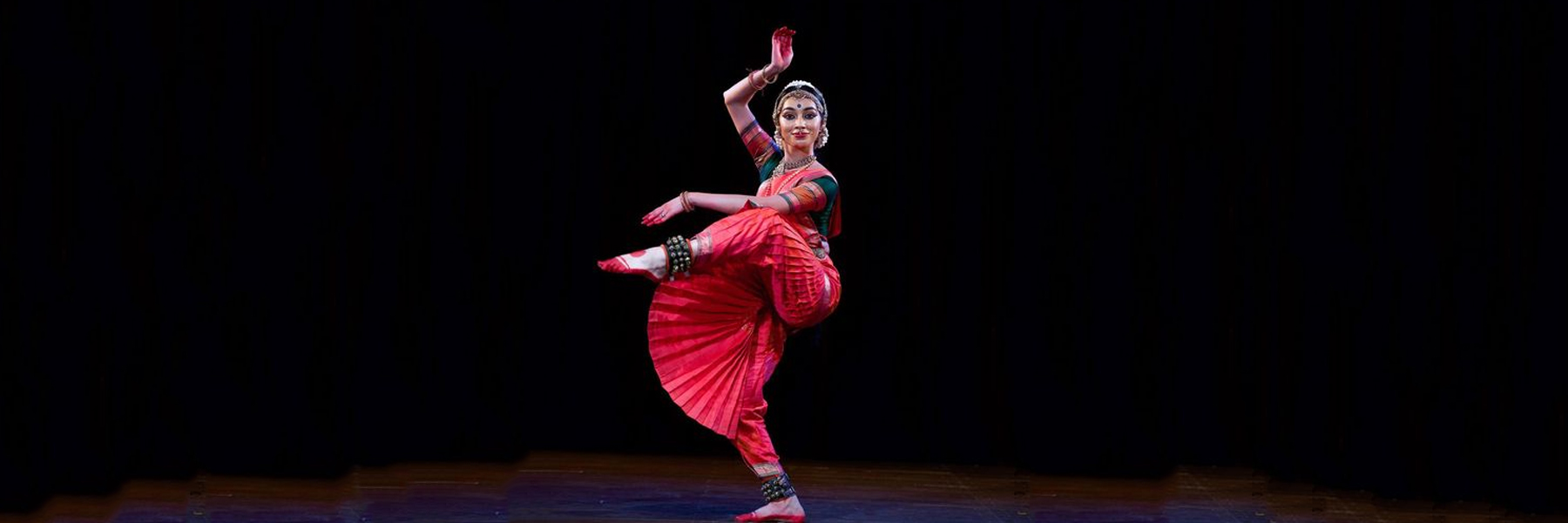
In history, dancers performed in temple settings with simple designs and minimal ornaments. As Bharatanatyam transitioned from temple rituals to stage performances, the costumes evolved to become more colourful, elaborate, and grand, with the introduction of stitched, embroidered costumes. Bright colours with silk fabrics paired with temple jewellery made of gold and featuring intricate designs were formulated. Decorative makeup and ghungroo’s were a part of this modern Bharatanatyam costume.
Varieties of a Bharatnatyam Dress and its Significance
1) The Designer of the dresses
Rukmini Devi Arundale, a legendary Bharatanatyam dancer, brought about revolutionary changes to the previously prejudiced and dejected form of Bharatanatyam as being ‘the Dance of the Devadasis’. She designed and created the conservative yet beautiful Bharatanatyam costumes that are worn by Bharatanatyam dancers today and designed jewelry that complimented these costumes and was traditional as well. The core costumes and jewelry used for classical dance follow a fixed pattern designed to facilitate freedom of movement. The dress is creative and graceful and highlights the features of the dancers while leaving the limbs free for action.
2) The Different Types of Bharatanatyam Costume
The Bharatanatyam costumes are among the most creative types of clothing; not only do they enhance the dance’s beauty but also symbolize Indian customs and culture. The different types of Bharatanatyam costumes are traditionally rich and filled with designs and motifs. Typically, these costumes are divided into traditional and modern costumes. Traditional Saree for Bharatanatyam The traditional Bharatanatyam dress follows the way of draping the saree as the Devdasis did in ancient times. A silk saree with embroidered edges is draped to the knees over a tight-fitting, contrasting blouse. The pallu of the saree is draped across the shoulder and tied tightly across the waist of the saree. The bottom part of the saree is neatly pleated and tucked into the waist.
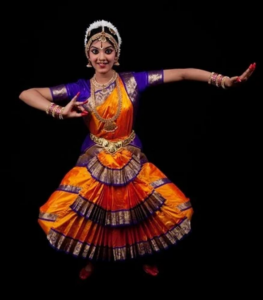
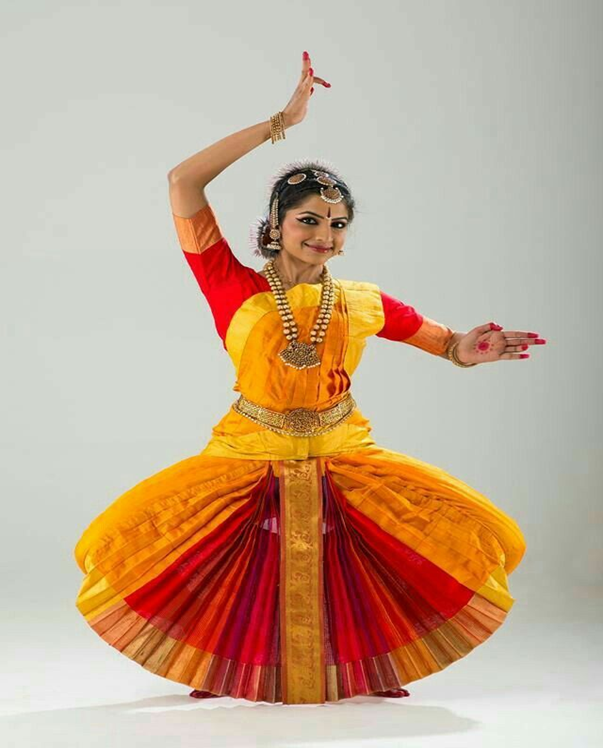
3) The Jewelry
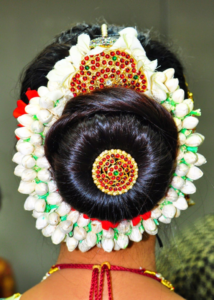
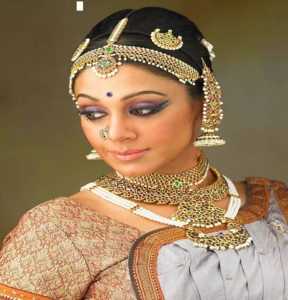
4) Ghungroo (ankle bells)
These are a necessary component in Bharatanatyam dance. The dancer responds to the “Tala” sounds with the appropriate rhythmic footwork. The rhythm of the feet is reinforced by the usage of Ghungroo, anklets worn by the dancers to increase the sound of their footwork and manifest the steps. The ghungroos are worn by three levels of dancers: intermediates wear three rows, advanced dancers wear five rows, and novices wear two rows.
5) The Male Bharatanatyam Costume
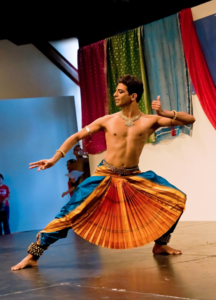
While choosing a Fabric for Bharatanatyam Dance Dress
Breathability: Bharatanatyam includes complex adavus, intricate footwork, and expressive poses. Hence, the breathability of the fabric, particularly during long performances, must be ensured through the use of lighter fabrics, which prevent overheating and provide comfort.
Durability:Bharatanatyam involves vigorous footwork and frequent hand movements; hence, the fabrics need to be strong enough to endure such constant wear and tear. Lighter and modern fabrics that have breathable and lighter blends that can depict traditional looks without wearing the dancer down are to be selected.
Color Symbolism : In Bharatanatyam, the colours of the costume are not just chosen for aesthetic appeal but hold deep symbolic meanings, reflecting the theme of the performance and cultural significance. Bharatanatyam offers a wide range of emotions and themes, from devotion, love, valor to sorrow. The colours in the dancer’s costume can be carefully chosen to amplify such emotions and to manifold the narrative and overall impact on the audience, such as the use of the color red to indicate tradition, passion, energy, strength, and love.
Contemporary Trends: Traditional Bharatanatyam costumes remain rooted in the rich history and symbolism, yet there have been many adaptations to form the modern Bharatanatyam costume. Designers have found innovative ways to blend tradition with modern styles and comfort and have incorporated fresh elements into the attire. Simplification of the design with lighter fabrics; simpler designs have been introduced, which offer free movement and comfort. Such costumes have subtle embroidery and digital prints instead of heavy work, reducing the weight. The use of lighter fabrics with silk blends or chiffon, which are easier to manage and less restrictive, is incorporated. They maintain the flow and grace of the costume while providing room for modern ideas. Several fusion costumes that feature Western elements, such as jackets, have been integratedto make modern Bharatanatyam costumes.
Care and Maintenance:Caring for Bharatanatyam costumes is essential to ensure their longevity and maintain their beauty over time, especially since they are made from delicate materials like silk and have intricate embroidery.
- a) Dry cleaning of costumes made of silk or other fabrics with heavy embroidery is to be ensured to avoid damage.
- b) Hand washing of simpler fabrics, such as cotton or light work fabrics, with special attention to use of mld detergent and cold water.
- c) Proper storage of the costume in cold, dry areas with separate storage of all the different pieces to avoid tangling or damage to embellishments.
- d) Using cotton or other breathable garment bags instead of plastic to store the costumes.
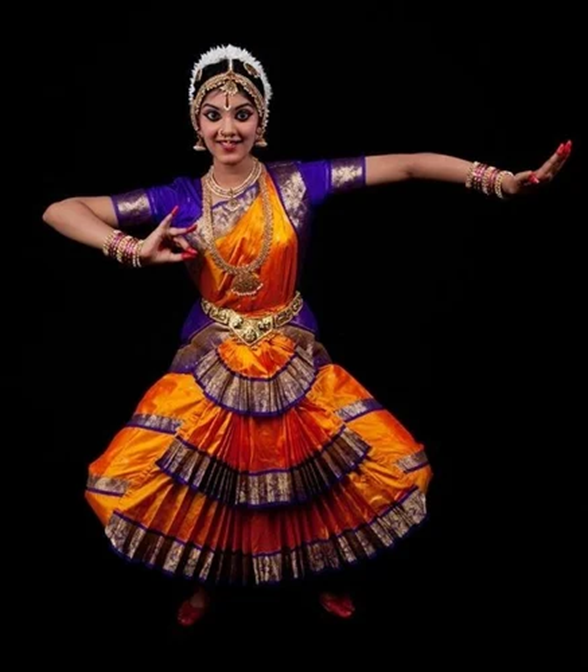
Related Blogs
- All Posts
- Bharatnatyam
